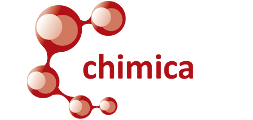- Details
- By Pierluigi Quagliotto
- Category: Uncategorised
- Hits: 1663
April 22nd, 2024
The iOrgChem site has been renewed. The graphic and aspect are almost the same but several pages have been improved and the user can appreciate a better experience of use.
In particular, we advice you to try using the page of the menu Exercises. Some of them are already been improved from both the appearance and functionality point of view.
Besides, large part of the code has been polished and often rewritten to make it more efficient and secure. We thank Dr. Iacopo Benesperi for this huge coding activity.
In the case of problems, you can report to:
In particular, we advice you to try using the page of the menu Exercises. Some of them are already been improved from both the appearance and functionality point of view.
Besides, large part of the code has been polished and often rewritten to make it more efficient and secure. We thank Dr. Iacopo Benesperi for this huge coding activity.
In the case of problems, you can report to:
- Details
- By Pierluigi Quagliotto
- Category: Uncategorised
- Hits: 1757
In this section we collect all links of interest for Organic Chemistry.
Who finds interesting links and wants to make them available, can report them to:
1) link to the Virtual Book of Organic Chemistry. Developed by Prof. William Reusch at Michigan State University, it was then translated into Italian by a High School Institute of the region Campania.
2) links to exercises of site Nomenclatures 101-University of Ottawa: thanks to Alyson b. Flynn, University of Ottawa
2) links to exercises on Nomenclature based on "Trivial Names": thanks to Prof. Norbert Haider of the University of Vienna.
3) Link to exercises on Organic Synthesis (basic level): thanks to Prof. Norbert Haider of the University of Vienna.
4) Link to the OPSIN program developed at the University of Cambridge. The program allows you to obtain the structural formula of a substance, given the name.
5) link to the ChemInteractive site: Exercise about Nomenclature, Stereochemistry and Reactivity at UCD - Dublin. Thanks to Prof. Mike Casey, UCD - Dublin, Ireland.
- Details
- By Pierluigi Quagliotto
- Category: Uncategorised
- Hits: 1648
In this menu are links to animated representations of reaction mechanisms
The mechanisms are reported along the functional group to which they are referred in most relevant books.
Mechanisms are provided by the University of Liverpool. Prof. Nick Greeves and his group have made quantum mechanics calculations and have provided these excellent free animations.
You are invited to view and inspect the individual mechanisms to consolidate the knowledge acquired during the study.
You should first study the mechanism on the text, in order to learn the basics with the right rhythm, suitable for each of us. Once you have acquired the basic mechanism, it is worth checking through the animation if everything that has been learned is true or if you need to improve your knowledge.
Prof. Greeves and his group are gratefully ackwnoledged for the enormous contribution that they made available free of charge to students.
You are invited to not be enchanted by the beauty of representations (at least ... not only!), but try to relate what one observes with the theory that was studied.
- Details
- By Pierluigi Quagliotto
- Category: Uncategorised
- Hits: 1713
< font style = "font-size: 20px; line-height: 1.5; font-weight: bold; color: black; text-align: justify ">
This menu lists various types of exercises:
< div style = "padding-left: 100px" > < font color = "red" style = "font-weight: bold" >
-
< li style = "text-indent: 10px" > nomenclature: from Structure to Name
< li style = "text-indent: 10px" > nomenclature: from Name to Structure (yet to be implemented)
< li style = "text-indent: 10px" > Identification of E or Z configuration of the alkene stereoisomers
< li style = "text-indent: 10px" > identification of R or S configurations for the stereoisomers of the asymmetric carbon
The exercises are available to all, and are specific for students of Bachelor and Master degree in Chemistry and Material Science.
Further improvements, such as the ability to access the answers after a "limited" number of attempts (e.g. 3), will be available soon.
< font style = "font-size: 14px; line-height: 1.5; font-weight: bold; text-align: justify "> Do not tire of trying. The exercise is the method by which we install "new software" in our brain!
- Details
- By Pierluigi Quagliotto
- Category: Uncategorised
- Hits: 1734
In this Menu we collected links related to sites that offer exhibitions of the theory of organic chemistry.
You can find the link to a Virtual Textbook of Organic Chemistry, and insights about atomic and molecular orbitals, the conjugation and the steroechemistry.
More Articles …
Page 1 of 3








